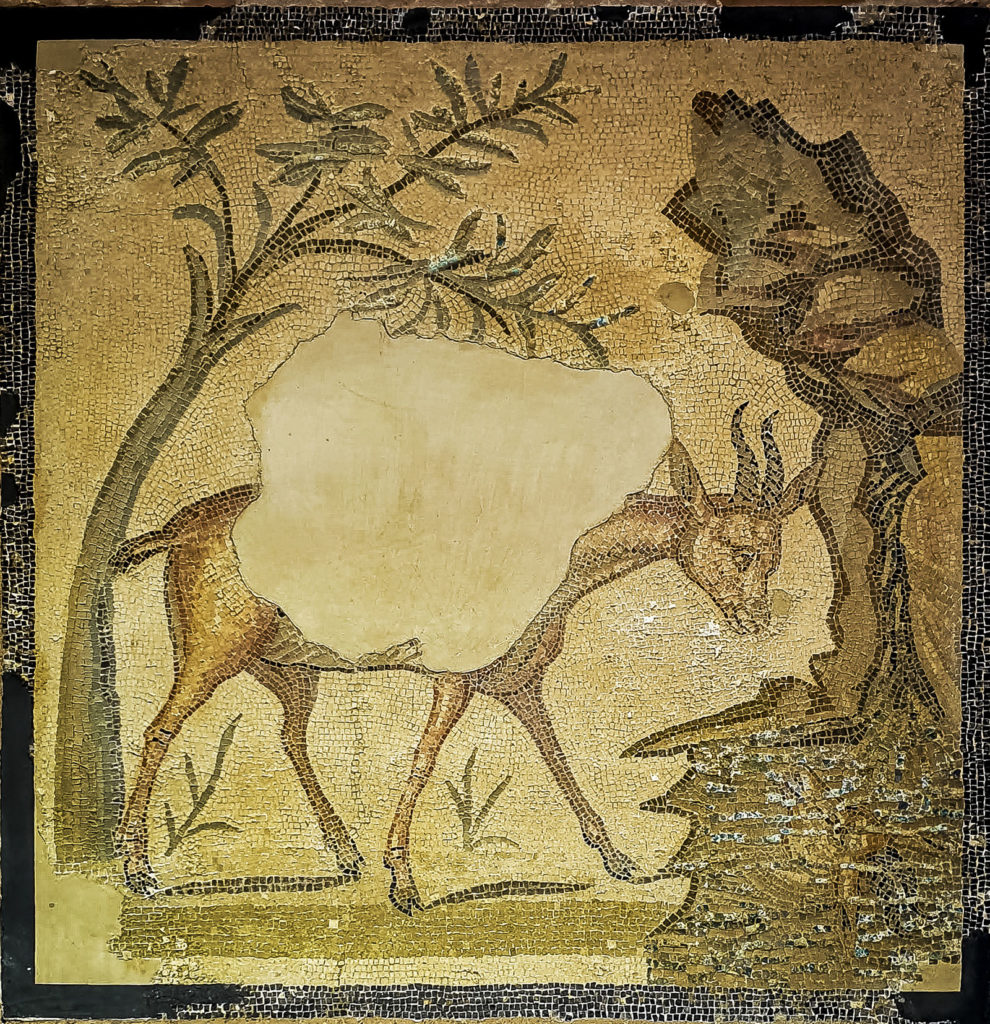In the Imperial Age, around the 3rd century AD, the houses of Agrigentum experienced a period of splendour and prosperity in which they were enlarged and renovated with very fine black and white or polychrome mosaic decorations, which gradually replaced the older technique of
opus signinum
. The most refined and best preserved examples were found in the Casa delle Svastiche (House of Swastikas), which features mosaic flooring with floral, zoomorphic and geometric motifs; in the Casa del Mosaico a Rombi (House of Rhombus Mosaics), with a series of rhombuses on the elevation; in the Casa del Maestro Astrattista (House of the Abstract Master), with an
opus sectile
that imitates a sawn marble floor; and in the Casa della Gazzella (House of the Gazelle), which is where the famous emblem of the gazelle made with
opus vermiculatum
, derives, now kept at the Regional Archaeological Museum “Pietro Griffo”.
 The great quantity and richness of these finds makes it possible to imagine the availability of immense resources relied on by the Agrigentines.
The great quantity and richness of these finds makes it possible to imagine the availability of immense resources relied on by the Agrigentines.
In fact, composing the mosaics generally needed four different and specialised people, who worked together to give life, tile by tile, to the wonderful mosaics that we can still admire today.
The technique involved the collaboration of the pictor imaginarius, who made up the design of the decoration; the pictor parietarius, who copied the design onto a medium and transferred it onto the cement through holes then brushed with coal dust; the lapidarius structor, who broke the stones into small fragments; and the pictor tessellarius, who placed the tiles on the cement.